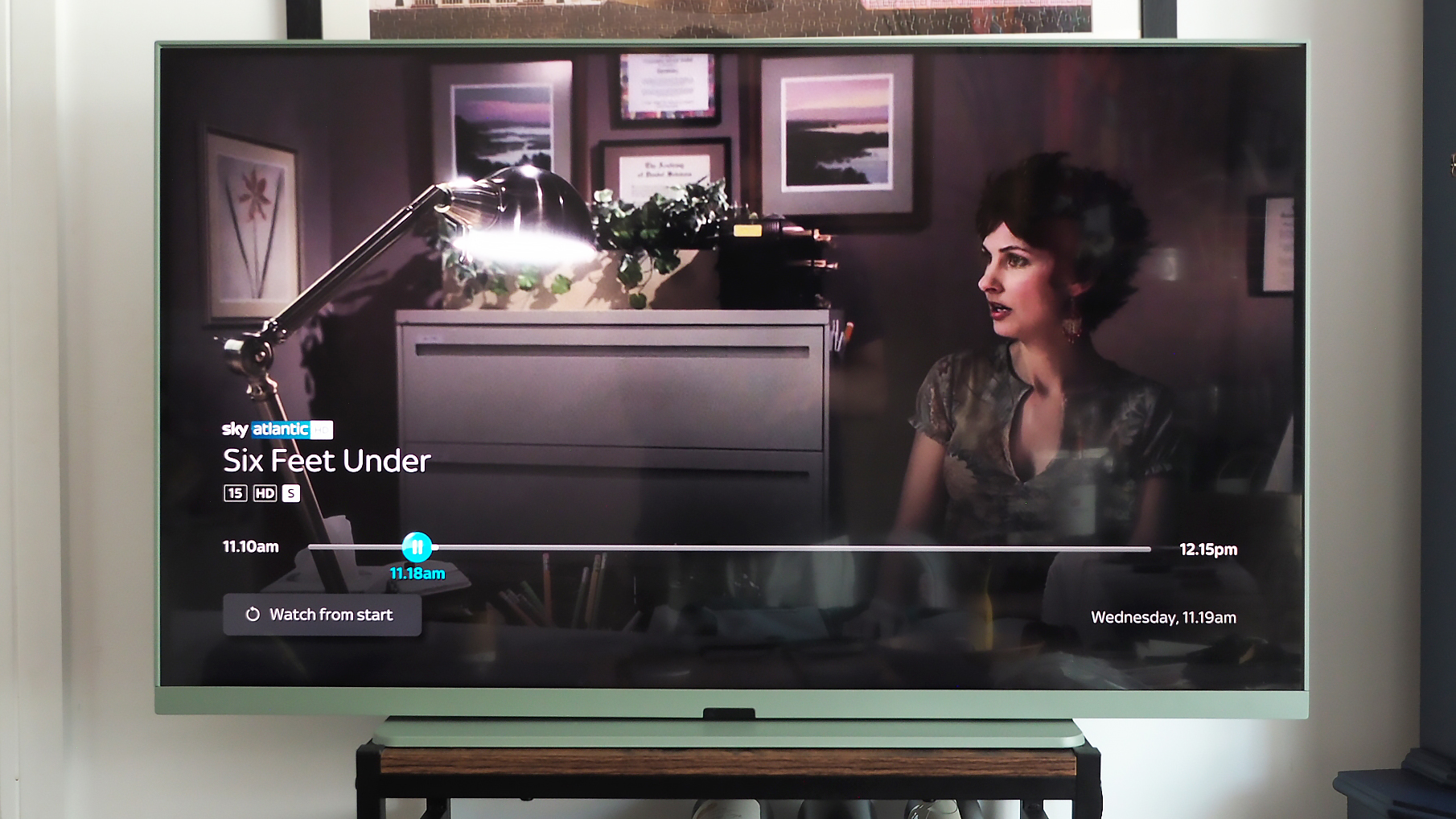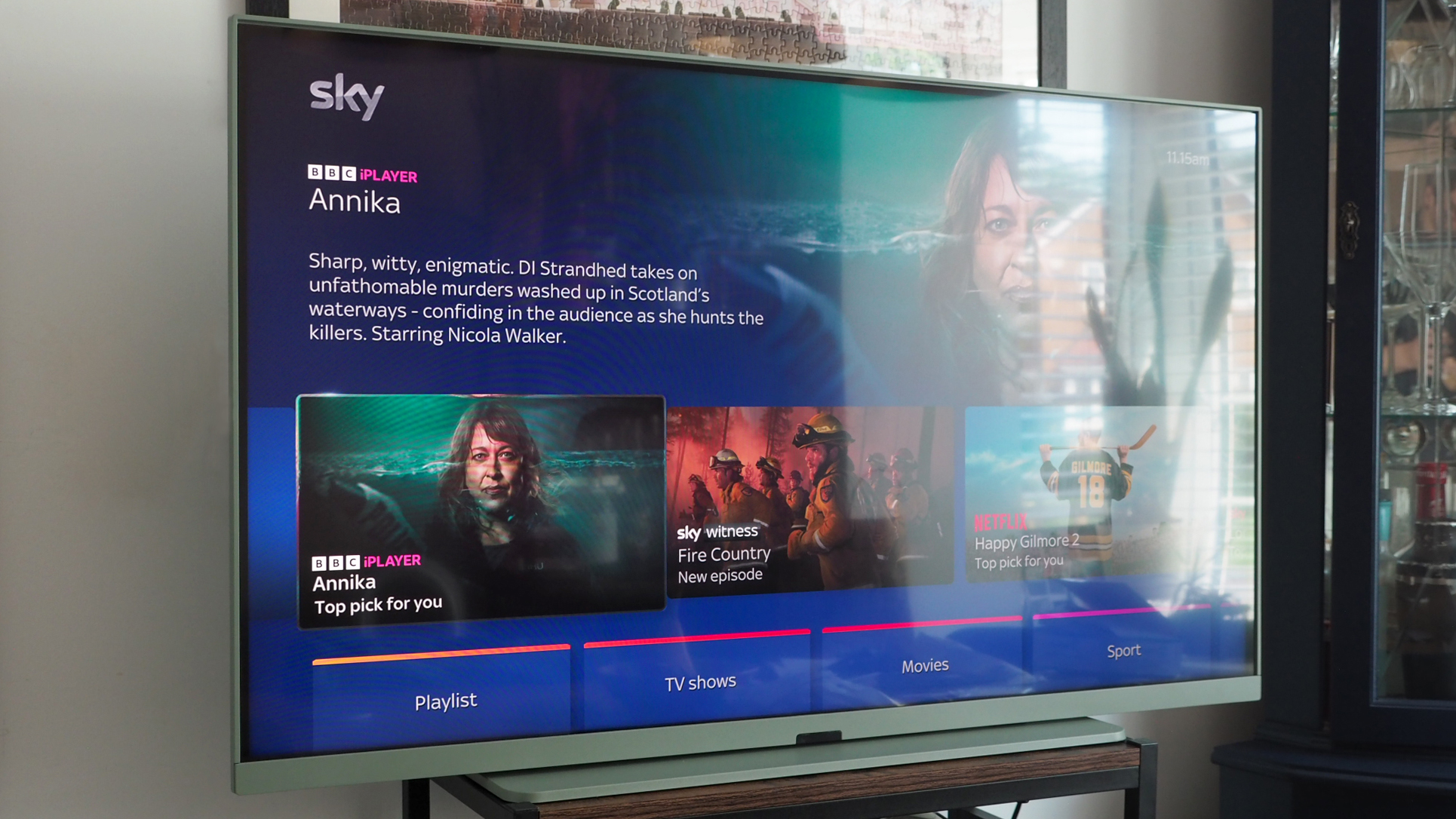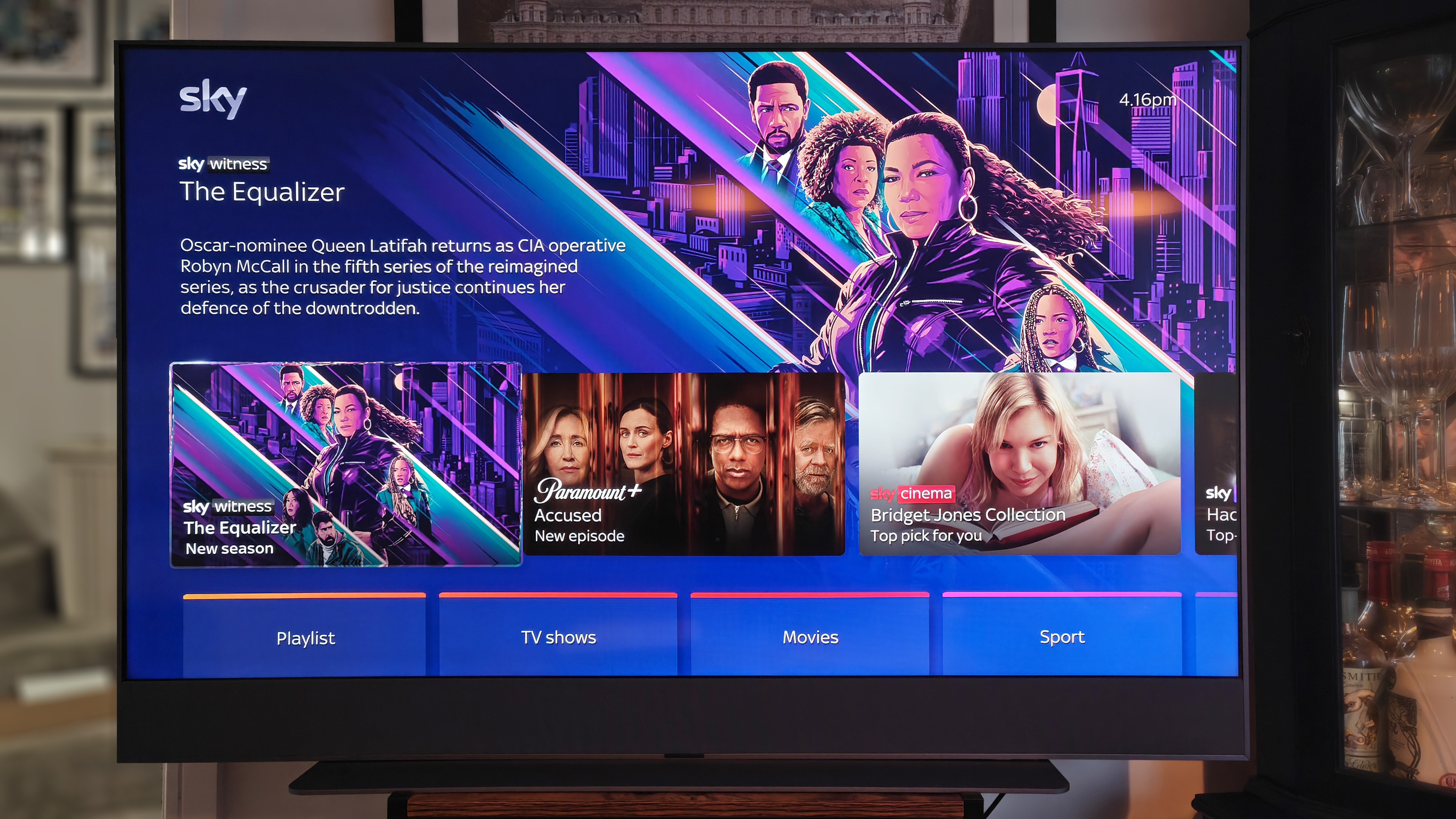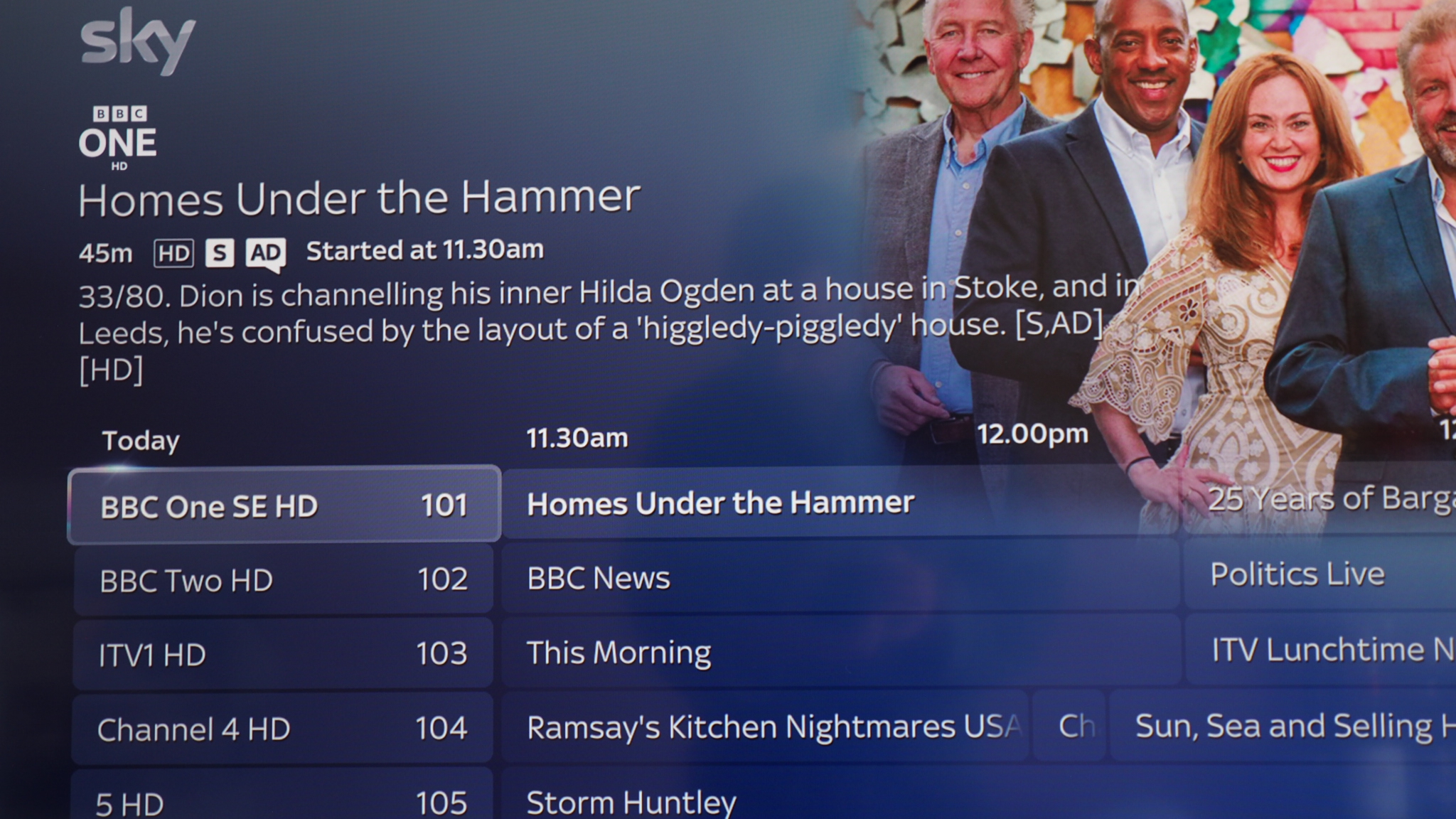
It's been almost four years since the original Sky Glass launched, the innovative all-in-one TV package designed to bring Sky and other streaming content into your home via your internet connection and without the need for any extras, such as a dish on the side of your home.
I owned a Sky Glass for a number of those years, swapping into the upgraded Sky Glass 2 earlier in 2025, which is one of the best affordable TVs you can buy. When I first installed it, I wrote about the 3 big upgrades that were immediately obvious.
Now, however, I've swapped once again for the newer, slimmer and simpler Sky Glass Air. It's not an 'upgrade', as it's Sky's most affordable offering, but I do think for some people – myself included – that it's the more logical buy. Here are the key takeaways and which, between Sky Glass 2 and Sky Glass Air, will suit you best.
1. Picture Quality

Sky Glass Air pictured in my kitchen, note some reflections
Not all Sky Glass TVs in the range are made equal. When I moved from the original Glass to Glass 2, there was a clear jump in anti-reflection and brightness, making for an improved picture experience all round – especially in bright rooms, which is where many will position their TV.
Sky Glass Air doesn't reap all of those benefits, at least not to the same degree, but it's still a decent viewing experience for the price. In my experience, it doesn't negate reflections quite as well – but I think that's just down to the overall brightness not being quite as peaky as with Glass 2.

The 55-inch Sky Glass 2 set up in my kitchen, before being swapped for the 43-inch Sky Glass Air
Nonetheless, the Glass Air does cater for 4K Ultra-HD content, where available, including high dynamic range (or 'HDR', for short). The panel's global dimming is less precise than Glass 2's local dimming zones, but I've not witnessed any horrendous light bleed – just don't expect the sort of contrast that the best OLED TVs can offer.
I've been using the Glass Air in my kitchen, as I elected for the smallest 43-inch model, leaving the best 65-inch TV spot in the living room available for my other testing duties, and it's an ideal solution. Small, unobtrusive, and able to cut through a large bay window's significant light, it handles the job nicely. As a second room TV for many, or one for the kids' bedroom, I can see it being an ideal pick.
Get all the latest news, reviews, deals and buying guides on gorgeous tech, home and active products from the T3 experts
2. Sound Quality

Sky Glass Air lacks the soundbar of the Sky Glass, but it's far cheaper as a result
The Sky Glass Air looks less chunky than the Sky Glass 2, which is one of its design appeals. Part of the reason for this is that it ditches the integrated 'soundbar' of the bulkier set, so doesn't feature a seven-speaker soundsystem.
However, the Air isn't technically slimmer, it just gives the appearance of being so. I've put a tape measure to set and the immediately visible edge makes up around 3.5cm, but when including all the rear sockets and whatnot, it's around 7cm. On its integrated flat plate stand that goes up to 18cm total.

Sky Glass 2's visibly thicker edge (pictured) is due to its soundbar integration and panel differences
Does Sky Glass Air sound as good as Sky Glass 2? Obviously not. But that doesn't mean it sounds bad by any means! If my extraction fans are on whilst cooking, all I need to do is grab the remote and increase the volume to cut through the added white noise. Air can also handle Dolby Atmos decoding, so there's a degree of pseudo-three-dimensional listening where source material permits.
Personally, I prefer the less obtrusive-looking design for my needs, plus I could add one of the best small soundbars if I wanted to upgrade the audio experience. I suspect most people looking at a Sky Glass purchase won't be considering extras, though, as part of the overall appeal is that it's an affordable all-in-one setup with minimal fuss.
3. Cost Effectiveness
But the real, obvious reason to consider Sky Glass Air is that it's far more cost-effective than any other Sky offering. Glass 2 is pricier, while the top-tier Sky Q set-top box will set you back significantly more (and you'll have to pay for one of the best TVs separately too!).
The 43-inch Glass Air is priced from £6 per month, over a 48-month period (you can double it to £12 for half the contract time) The 55-inch increases to £10, while the 65-inch tops out at £13.
Note, of course, that this base rate is for the set and nothing more. As a minimum requirement you'll need Sky TV Essentials, at £15 per month, meaning the true minimum cost is £21 per month. Various additions will cost yet more, but when you consider a Netflix subscription is £18.99 per month, a whole TV setup for a couple of quid extra sounds like quite the bargain, doesn't it?

Sky OS is the same on any Glass TV, making for familiar and easy control
Accessing all this content is one of the other joys of Sky Glass Air. With its Sky OS operating system, it's super easy to use, familiar, has a built-in electronic programme guide (EPG), and easy access to your favourite apps and games too (yes, you can play games on screen using the remote). You can't record using the set, but Sky's Playlist feature, which can on-demand source playback from cloud recordings, means catching-up is easy.
So is Sky Glass Air better than Sky Glass 2? Well, no – but then it's not supposed to be. It's all about choice. For me, and I suspect many others, ditching the soundbar design and taking that big price cut for the sake of minor panel performance differences is the smarter move for a second room TV. For a main setup, I'd go Glass 2 proper or buy separately. But my kitchen now feels like my Air's natural home – and I love having it there.

Mike is T3's Tech Editor. He's been writing about consumer technology for 15 years and his beat covers phones – of which he's seen hundreds of handsets over the years – laptops, gaming, TV & audio, and more. There's little consumer tech he's not had a hand at trying, and with extensive commissioning and editing experience, he knows the industry inside out. As the former Reviews Editor at Pocket-lint for 10 years where he furthered his knowledge and expertise, whilst writing about literally thousands of products, he's also provided work for publications such as Wired, The Guardian, Metro, and more.
You must confirm your public display name before commenting
Please logout and then login again, you will then be prompted to enter your display name.
